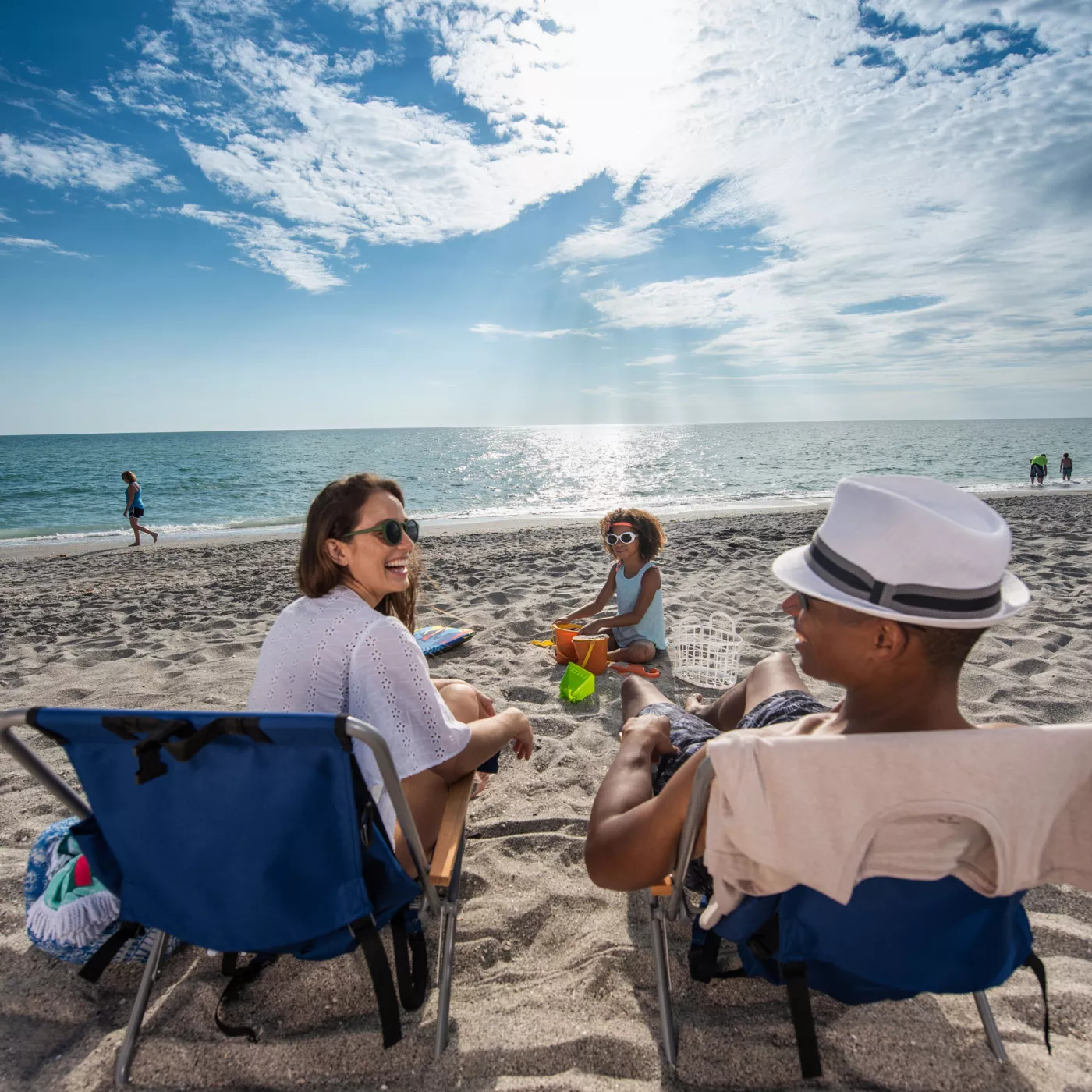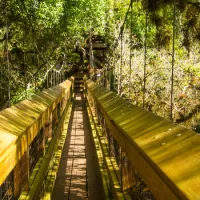A Brief History of Sarasota and Her Islands
We know Sarasota as both a relaxing resort town and a sparkling cultural center. Below, take a look at Sarasota’s humble beginnings and the people that helped make it the shining star it is today.
“Of course there was much discontent, being dumped, like this, in a wild country, without houses to live in …” - Alex Browning
After an arduous voyage to what they thought was a thriving community, the Scottish colonists arrived at Sarasota Bay, in a spot close to where Marina Jack is now located.
Sarasota offered only a harsh frontier and after a few months of hardship and heartbreak, the group disbanded.
Today, there is a beautiful walkway, public art, restaurants and a breathtaking park near their landing site.
“Man, y’er missing half y’er life” - John Hamilton Gillespie to a nongolfer
Gillespie came to Sarasota to revive the Scots’ colony, built the DeSoto Hotel and introduced golf to Sarasota and Florida as a whole. In 1905, he laid out a nine-hole course east of town, beginning at Links Avenue.
“Living on a tropical island … where one can enjoy life the year around.” - Harry Higel
Higel helped advertise Siesta Key as an “ideal spot for winter and summer homes.” We now enjoy the relaxing lifestyle on this island utopia with its delicious restaurants, eclectic array of shops and arguably the most beautiful beach in the world.
”Sarasota Bay is more beautiful than the Bay of Naples.” - Bertha Palmer
Mrs. Bertha Palmer, a Chicago socialite, arrived in what was then a frontier town with few to recommend it. Her pronouncement about Sarasota Bay cast the international spotlight on the area. Palmer invested heavily in Sarasota and built her winter retreat, The Oaks, at Osprey.
For a glimpse at life at the turn of the last century, visit Historic Spanish Point, the site of the doyenne’s former home, with its pioneer homestead, gardens and nature trails.
Owen Burns helped push the community toward its resort town future. He built a number of important buildings, including the Cà d’Zan, Burns Court, Herald Square and the El Vernona Hotel.
Adjacent to Burns Court Cinema, the Burns Court area has the atmosphere of a 1920s movie set, with elegant and funky shops and restaurants.
“For though life is short, art is long.” - John Ringling
Ringling moved to Sarasota to relax from the ardors of the circus and became a major developer. His art museum, art school and bayfront mansion engulfed Sarasota with the culture for which the area is famous.
For a glimpse of Ringling’s Gatsby-like lifestyle, visit his mansion, the Ca' d’Zan, on the grounds of the John and Mable Ringling Museum of Art.
Andrew McAnsh built the Mira Mar Apartments, Hotel and Auditorium. These were Sarasota’s first boom-time buildings, giving the community accommodations for its wealthy snowbirds. The hotel was later demolished, but the apartments on South Palm Avenue now house art galleries, gift shops and a popular Italian restaurant.
John Nolen, one of America’s premier city planners, was hired by the Brotherhood of Locomotive Engineers to transform Venice into one of the most beautiful communities in the nation.
Sarasota's Municipal Auditorium opened in grand style in time for the Sara de Sota pageant. Mayor E.A. Smith called the auditorium and surrounding Bayfront Park a dream come true, a boon to tourism. Still in use today, the auditorium hosts numerous events year-round.
The Greatest Show on Earth was filmed in Sarasota, underscoring the town’s reputation as "the Circus City." Premiering at the Florida Theatre, it won an Oscar for Best Picture. Today, the Florida Theatre is the Sarasota Opera House, one of the area's cultural cornerstones.

![Boat parking at The Crow’s Nest in Venice [Photo: Lauren Jackson]](/sites/default/files/styles/popular_stories_teaser/public/2023-import/The-Crow%2527s-Nest-cropped__OPT.jpg.webp?itok=ycs37M-O)


